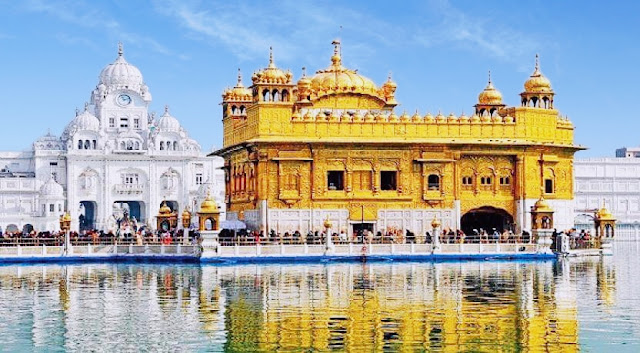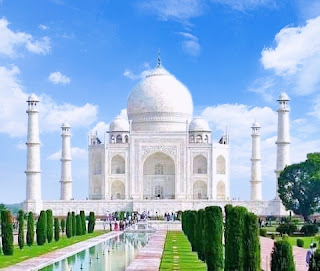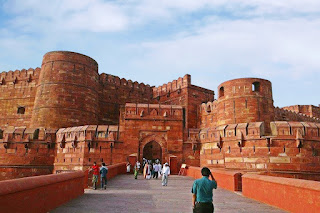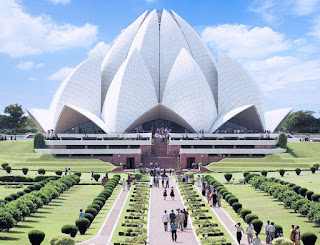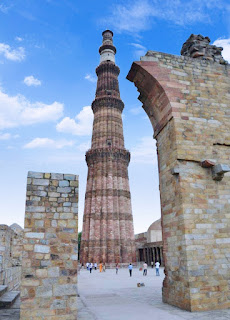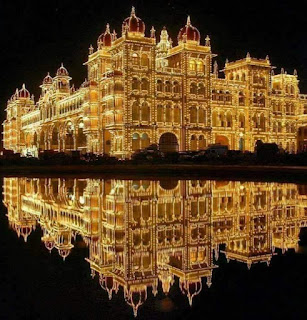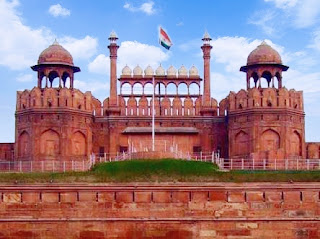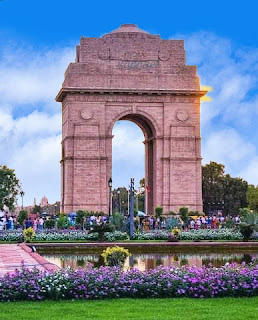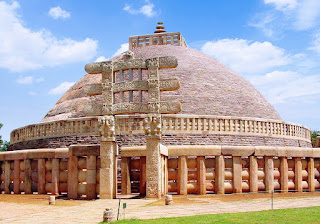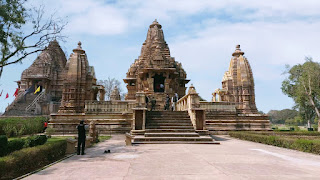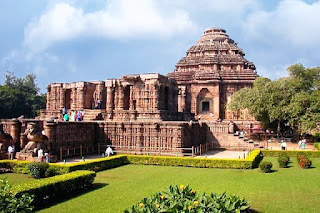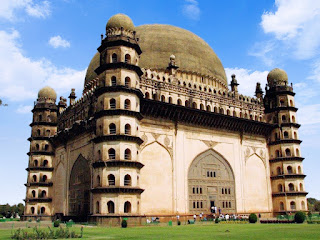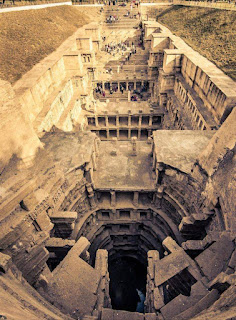Historical Monuments
Historical monuments are collections of invaluable information about ancestors. Historical monuments such as buildings and forts are not just stone, mortar, wood and other items. They have religion, philosophy, politics and culture. Each historical monument speaks several languages. Everyone needs to realize that visiting historical monuments is a journey in search of their own roots. If you go through them, you can see the people who have disappeared. Their faith, politics, language, art, life and attitude. So many things to see.
The proclaimed historical monuments of the existence and personality of each people are not only evidence of their existence yesterday, but also the indispensable factor for their survival today and the indispensable factor of their survival tomorrow. Historic buildings are macroscopic links that connect a people and a country to the past. When historical monuments are destroyed, historical records are erased forever. Delhi is one of the most historic cities in India. The Archaeological Survey of India estimates that there are about 175 monuments in Delhi. Many historic buildings were built by Mughals and Turks.
Major historical monuments in India
Golden Temple ( Sri Harmandir Sahib)
The Golden Temple is located in the city of Amritsar in the Indian state of Punjab. The city of Amritsar was founded in 1574 by Guru Ramdas, the fourth Sikh Guru. The Golden Temple was built by Guru Arjan Dev, the fifth Guru. The Harmandar Sahib Stone Foundation was established on December 28, 1588 by Sai Hazrat Mian Mir, a Muslim and Sufi saint. 1604 The scripture of the holy book Adi was completed and placed in the gurudwara. Harmandar Sahib, considered sacred by the Sikhs. Guru Granth Sahib, the holiest religious site, is located here during the day.
At night the scripture goes "Sukhasan". Harmandar Sahib has four doors. These four gates mean that all human beings, irrespective of caste or creed, can enter. The present gurudwara was renovated in 1764 by Jassa Singh Ahluwalia. In the 19th century, Maharaja Ranjit Singh saved the region of Punjab from the onslaught of external forces and gilded the upper floors of the Harmandar Sahib, as the English name implies. There is also a free community kitchen (langar) and free meals available at all Sikh gurudwaras. Durbar Sahib is now a major pilgrimage center in India, which is visited by many people daily.
Hawa Mahal
Hawa Mahal is a unique style palace located in Jaipur, Rajasthan. Hawa Mahal literally means the abode of the winds. The five-storey mansion, with its small windows and cages, is built for women to view the outside world. In those days it was rare for women to go out. So their only help in knowing what was going on in the city was the windows in the Hawa Mahal. The palace was built in 1799 by Maharaja Sawai Pratap Singh. Hawa Mahal was built as part of the women's palace inside the city of Jaipur, also known as the City Palace of the Kachava Rajputs, the rulers of Jaipur. The Rajput style building was designed by sculptor Lal Chand Usta with white ridges in red sandstone.
The mansion has 953 windows made of red sandstone known as jarokas. Sawai Pratap Singh, a devotee of Lord Krishna, designed the front of the Hawa Mahal in the shape of Lord Krishna's crown. The entrance to the Hawa Mahal is behind it. Hawa Mahal is only the front part and there are no structures behind it. Once inside, only the courtyard and rooms are more visible. The five floors have only one side facing the outside of the mansion. Another feature is that it is always cold inside the mansion. The courtyard is also known as the Sarath Mandir. Each floor is named as Ratan Mandir, Vichitra Mandir, Prakash Mandir and Hawa Mandir.
Taj Mahal
The Taj Mahal is located on the banks of the Yamuna River in Agra, Uttar Pradesh. It is about 200 km from New Delhi. It was built by Emperor Shah Jahan in memory of his wife Mumtaz Mahal. In 1983, the Taj Mahal was inscribed on the UNESCO World Heritage List. Construction of the Taj Mahal and nearby monuments began in 1631. It took thousands of artists and sculptors 22 years to complete the work. Carved in marble, this marvel is considered to be one of the finest examples of Mughal architecture. World-renowned architects have been involved in the design of the Taj Mahal.
Ustad Ahmad Lahori and Ustad Issa are considered to be the main architects of the Taj Mahal. The white marble required for the construction was mined from Makrana in Rajasthan. The Taj Mahal is located on a rectangular platform. Above the center is the dome. There are towers at each corner of the platform. The total height of the Taj Mahal is 73 meters. The remains of the Mumtaz Mahal are kept under the dome. Nearby is the remains of Shah Jahan. This monument is considered as one of the wonders of the world. The Taj Mahal is now under the Archaeological Department.
Agra fort
Agra Fort is built by the Mughal Emperor Akbar in Agra, Uttar Pradesh. Also known as the Red Fort of Agra, it was inscribed on the UNESCO World Heritage List in 1983. The fort is located 2.5 km northwest of the world famous Taj Mahal.It was the most important fort in India during the Mughal rule. The Mughal emperors from Babur to Aurangzeb ruled from here. It was also the largest treasury of the empire.
The fort was the royal residence and military base during the Mughal rule. This was until the headquarters of the Mughal Empire was shifted from Agra to Delhi in 1638. The building complex inside the fort is reminiscent of Persian Timurid style architecture. The fort is built in such a way that it looks like another city within a city. Agra Fort is a landmark of centuries of history. The fort has witnessed the study and rise of many dynasties. The history of the Agra Fort dates back to the Sikarwar tribe.
Today's Agra Fort has about two dozen structures built by the Mughal emperors in the 16th - 17th centuries. The main attraction of the place is the Jahangiri Mahal built by Akbar. This is an ancient Mughal palace. It is also the largest residence in the complex.There are also beautifully built churches inside the fort. Shah Jahan built several mosques here, including the Moti Masjid, the Nagina Masjid and the Mina Masjid. All three are made of marble. The Sheesh Mahal, whose walls and roof are covered with thousands of small mirrors, is another attraction of the place.
Lotus Temple
The Lotus Temple is a major attraction in Delhi, the capital of India. Although it is a place of worship for the Bah' Faith, it is still visited by people of various faiths. Built in the year 1986, this temple is one of the largest and most magnificent temples in India. Its sculptural ingenuity has won numerous awards. The nine gates around the temple open to one of its centers. The center has seating for about 2,500 people. The floor of the center, which is more than 40 meters high, is made of white marble.
Lotus temple located in the village of Bahapur on a 26 acre land with nine ponds around it. It is one of the most visited places in the world. The nine sides of this lily-shaped temple are encrusted in marble and consist of 27 petals that stand free in groups of three. Its sculptor was Faribos Sahaba from Iran. The price of the land and the construction cost were mainly paid by Ardishir Rustampur, a native of Hyderabad. He spent his entire life savings on it in 1953.
Qutub Minar
Qutb Minar is the tallest brick minaret in the world. It is located in the Qutb Complex in Mehroli, South Delhi. The tower is 72.5 m (237.8 ft) high and has 399 steps to reach the top. The five-story basement has a diameter of 14.3 m and the upper floor has a diameter of 2.75 m. The first floor of the minaret was built in 1199 by Qutbdin Ibn Bakr, the Sultan of Delhi. By 1229, Sultan Iltumish had completed the construction of the other four floors. Similar towers were erected in many parts of Afghanistan during the Gori Empire. Qutbdeen, a slave of the tombs, built the tower with this idea in mind. Examples of 8-angle, 8-arc-style foundations of the Qutb Minar can be found in many parts of Afghanistan. The minaret was often damaged by lightning and earthquakes. The minaret was repaired during the reigns of Alauddin Khilji, Muhammad bin Tughlaq, Feroz Shah Tughlaq and Ibrahim Lodhi, the Sultans of Delhi.
Ancient records show that during the reign of Muhammad bin Tughlaq in 1326, the Qutb Minar was struck by lightning and damaged. Records show that Feroz Shah Tughlaq repaired the above marble layers in 1368 after repairing the damage caused by lightning. Arabic words are engraved on the first floor wall built by Qutbdeen Ibn Bakr. Except for the top two floors, all the other floors are made of red sandstone blocks. The upper two floors are made of Feroz Shah Tughlaq marble. The tower is a perfect example of Indo-Islamic architecture. The Qutub Minar is a UNESCO World Heritage Site. Visitors are no longer allowed inside the minaret, as 25 children died inside the minaret in a stampede caused by a power outage in 1980.
Mysore Palace
Mysore Palace is a famous palace located in Mysore, Karnataka. It is also known locally as Amba Vilas Palace. The palace was the official residence of the Wadiyar dynasty who ruled Mysore. Today, the Mysore Palace is a major tourist attraction in India. Mysore is also known as the city of palaces. It is also the most famous palace in Mysore. The first palace was built by the Wadiyar kings in the 14th century. But it was later demolished and rebuilt several times. Construction of the palace we see today began in 1897. It was completed in 1912. The palace was re-expanded in the 1940s.
The palace is a three-storeyed building with semi-arches made of marble. The palace is surrounded by a large garden. The architect of the palace complex was a British man named Henry Irwin. The paintings of the palace were done by Ravi Varma. The architecture of the Mysore Palace is known as the Indo-Saracenic style of architecture. Indo-Saracenic architecture is a hybrid of Hindu, Rajput, Gothic and Islamic architecture. The palace has many unique rooms. Mysore Palace is the main venue for the annual Mysore Dussehra Festival which is held every autumn. There are a total of 12 Hindu temples within the Mysore Palace complex. The oldest of these was built in the 14th century. The latest was built in 1953.
Red Fort
The Red Fort is located in Delhi. Red Fort, formerly known as the 'City of Walls' in the 17th century, was built by the Mughal Emperor Shah Jahan in 1647 in Old Delhi. The Red Fort we see today is the result of thousands of years of hard work by thousands of workers. Spread over an area of 2 km, the fort is also a UNESCO World Heritage Site. It also tops the list of monuments destroyed by the rulers in history. The Prime Minister of India addresses the people on Independence Day from the top of the fort where the tricolor flag is always hoisted.
The Red Fort was the center of ancient Delhi. To the east of the fort and the city is the river Yamuna. The fort has two main entrances, the Lahore Gate on the west and the Delhi Gate on the south. The gates to the city walls that lead from these gates have the same names. The fort also has a gate called Rajghat Gate which leads to the Yamuna. The Lahori Gate on the west side is the main entrance to the fort. After this, after the Chatta Chowk market and the Nobatkhana Band building, you can see the Diwan-e-Am building where the Emperor addressed the common people. Beyond the Chaharbag to the east, all the buildings up to the Rang Mahal at the eastern end of the fort stand in a single row to the east and west. The main palaces of the Mughal period fort are located in a single row to the south along a rampart along the river Rang Mahal.
Shah Burj, Hira Mahal, Hammam, Diwan-e-Khas and Khas Mahal are the buildings on the north side of the Rang Mahal and Mumtaz Mahal and the south side of the Rang Mahal. The other buildings in the fort are covered with red sandstone while the royal palaces in this line are made of marble. A stream flows from the Shah Burj to the north and flows through the base of all these buildings. This waterfall is also known as Nahar-e Bihisht or Swargiyadhara. Inside the fort is the Hayat Baksh garden to the northeast and some of its structures.
India Gate
India Gate is located in the heart of the Indian capital Delhi. This monument is popularly known as Amar Jawan Jyoti. India Gate is one of the largest war memorials in the world. It is a monument erected to commemorate soldiers who died in World War I and the Afghan War. The total height of India Gate is 42 meters. Many major roads in Delhi start from its vicinity. Many people visit the surrounding gardens in the evenings, which are beautifully preserved. In the evenings it is often decorated and beautified with electric light. Located on the Rajpath, the main thoroughfare in Delhi, the India Gate was originally known as the All India War Memorial. Its sculptor is Edwin Lutyens. The foundation stone was laid on February 10, 1921, marking the beginning of construction. It was completed in 1931. The names of soldiers who died in the war are engraved on the wall. After the independence of India, a war memorial of the Indian Army was erected inside it.
Amar Jawan Jyoti is a lamp lit under the arch of the India Gate. It is made of black marble and is designed to commemorate soldiers who died in battle. The military battle rifle and soldier's cap are attached to it. It was established on January 26, 1972 to commemorate the 1971 Indo-Pakistani war. The then Prime Minister Indira Gandhi was in charge of the establishment. Amar Jawan Jyoti is going to be extinguished after 50 years. The fire was put out as part of Amar Jawan Jyoti's merger with the flames of the National War Memorial ahead of Republic Day.
Charminar
Charminar located in Hyderabad, Telangana, India. The Charminar's long history includes the existence of a mosque on its top floor for more than 400 years. Charminar means a church with four minarets. Charminar was built in 1591 to commemorate the eradication of the plague from Hyderabad. The monument was erected by Sultan Muhammad Shahi Qutb Shah of the Qutb Shahi dynasty. The 4 minarets in the Charminar represent the 4 caliphs of Islam. Construction of the Charminar began after the Sultan moved his capital from Golconda to Hyderabad. Charminar is made of granite, limestone and granite.
Each side of the Charminar is 20 meters long. The towers are 48.7 meters long. Inside the towers are 149 steps. The monument was erected in the heart of the city of Hyderabad using Persian architectural styles. Charminar has been the pride of India for centuries and has many untold stories and stories to tell. The clock is in tune with the shape of the Charminar monument. There are four clocks in each of the four directions, one for each arch. The clock was installed here in 1889.
Meenakshi Amman Temple
Meenakshi Sundareswarar Temple or Madurai Meenakshi Temple is a temple located in Madurai, Tamil Nadu, on the south bank of the Vaigai River. Goddess Parvati is worshiped here as "Meenakshi" and Lord Shiva is worshiped as "Sundaresan". The Madurai temple complex has a total of 14 towers. The largest of these is the South Tower. Its height is 51.9 m (170 ft). The Meenakshi Temple is estimated to have a total of 33,000 sculptures. There are 10 towers in the temple complex. The most famous and tallest of these is the South Tower. 170 feet (52 m) .The tower was built in 1559. The East Tower is the oldest of the temple towers. The East Tower is the oldest of the temple towers. The East Tower was built by Mahavarman Sundara Pandyan between 1216-1238. Each tower is a multi-storeyed structure. Each floor is adorned with numerous stone idols.
The most famous architectural marvel of the Meenakshi Temple is the Aayiramkal Mandapam. Although the name of the hall is a thousand feet, it has 985 feet (pillars). It was built in 1569. Meenakshi Temple is located in the heart of the city of Madurai. It is one of the largest temple complexes in the world. The temple towers in Madurai are the crowning example of Dravidian architecture. The temple is one of the few temples in Tamil Nadu to have four gates facing in all directions.
Hampi
Hampi is an ancient village in the south Indian state of Karnataka. It is 163 km from Hubli. It is about 65 km east of Bellary. Hampi is located on the southwest bank of the Tungabhadra River, to the northwest. Hampi can be reached via Hospet from the Tungabhadra Dam. Hampi was earlier known as Pampa, the ancient name of the river as it was built on the banks of the Tungabhadra River. Today's village, where the Virupaksha Temple is located, continues to be an important pilgrimage center even after the Vijayanagara period. Hampi has many historical monuments of the ancient city. Hampi is a UNESCO World Heritage Site. Hampi was the capital of the Vijayanagara Empire, where the ruins of Vijayanagara are scattered.
Sanchi Stupa
Sanchi Stupa is located in the village of Sanchi, 46 km from Bhopal in the state of Madhya Pradesh. The Buddhist stupas are the main attractions here. The relics of Lord Buddha are kept in the stupa. It was built during the reign of Emperor Ashoka.Sanchi has been a UNESCO World Heritage Site since 1989. The Sanchi Stupa is located on a hillock about 300 feet high on the banks of the river Betwa. At the base, the pillar is a huge stone structure 115 feet in diameter and 50 feet high. Its base, which symbolizes the earth-containing sky, is called the ovum. Above the ovary is a rectangular harmika with a base of 50 feet in diameter, with a flagpole on top of it.
Chhatravali is the name given to the umbrellas on the flagpole that represent the various levels of the heavens. There is a stone paved walkway 16 feet high from the ovary, and there are several stone gates on the sides of the walkway. These are called pennants. The Great Stupa of Sanchi is a philosophical symbol that sees all things in unison. Sanchi is mentioned in some notes by Mahendran, the son of Emperor Ashoka and a Buddhist missionary in Sri Lanka. Sanchi has about fifty monuments, including three stupas and a few temples.
Jallianwala Bagh
Jallianwala Bagh is a historical monument of national importance in India. It is located in Amritsar, Punjab. It stands for the memory of those killed and wounded in the Jallianwala Bagh Massacre of April 13, 1919. Situated near the Golden Temple in Amritsar, this monument houses a museum, a gallery and several monuments. A memorial was erected here in 1963 in memory of the martyrs and wounded who died in the Jallianwala Bagh.
Ajanta and Ellora Caves
Ellora is located at a distance of about 29 km from Aurangabad in Maharashtra and Ajanta at a distance of 107 km.
The Ajanta Caves are located on the banks of the Vagoor River, a tributary of the Tapti River, which shares its border with Maharashtra. This area in the Deccan Plateau was discovered during a military expedition during the Mughal Empire. There are 29 caves carved out of huge rocks. They are believed to have been completed during the Mahayana and Hinayana periods, when Buddhism was very popular. These cave temples were built during the reign of the Satavahanas and Vakadakas.
The carved murals in most of the places except the floor are a masterpiece that amazes those who enter through the elephant-shaped door. The caves, which are divided into temples and monasteries, are supported by granite pillars. Each of the temples was a place of worship dedicated to the Buddha, and the monasteries were the abode of Buddhist monks. As you reach each cave entrance through the long corridor, you can see the various shaped stones of the Buddha carved in the shape of a sanctuary. The Ajanta Caves are home to many stories, including the Great Stupa without Buddha Statues and the ancient paintings.
Ellora has 34 caves that are built in the same style as Ajanta. Of these, 12 are Buddhist temples, 17 are Hindu temples and 5 are Jain temples. The caves of Ajanta and Ellora, two of the finest examples of ancient Indian art, were also a resting place for ancient traders and pilgrims. The Ajanta and Ellora Caves, which were inscribed on the World Heritage List in 1853, are protected by the Archaeological Survey of India.
Fatehpur Sikri
Fatehpur Sikri is a city located in the Agra District of Uttar Pradesh. It was built by the Mughal Emperor Akbar in the 16th century. Fatehpur Sikri is a monument of Mughal culture. Fatehpur Sikri is 6 km long and has three sided walled towers and seven gates. Here are some of the ones I found to be interesting: Buland Darwaza is one of them. At 54 meters high, it is the tallest gate in the world. Intricate ornaments and carvings can be seen on the walls. Verses from the Qur'an adorn the walls in many ways. It took 12 long years to complete. Buland Darwaza is the gateway to the Juma Masjid in Fatehpur Sikri.
The total height of the gate is forty meters and there are 42 steps to climb to the top. Panch Mahal is one of the prominent structures of Fatehpur Sikri. Built for the wives of Emperor Akbar, the building has five floors. The Jama Masjid is the main mosque in the Fatehpur Sikri complex. It was built by Emperor Akbar under the supervision of Saint Salim Chishti. The tomb of St. Salim Chishti can be seen outside the entrance of the mosque. The tomb of Salim Chishti is considered to be the holiest site in Fatehpur Sikri. The royal palace complex at Fatehpur Sikri is now a UNESCO Heritage Site. It is of great importance for its architecture and historical temples and monuments.
Khajuraho Temple Complexes
Khajuraho Temple Complex is an ancient Hindu-Jain temple located 175 km southeast of Jhansi in the Chattarpur District of Madhya Pradesh. Khajuraho Temple Complex is one of the most popular tourist destinations in India. The temples here are famous for their city style architecture and sculptures. Khajuraho is located in the middle of the Bundelkhand Forest, west of Varanasi and south of the Ganges.
These temple complexes are among the UNESCO World Heritage Sites. C.E. Most of the temples in Khajuraho were built by the Chandela dynasty kings between 950 and 1050. According to historical records, there were 85 temples spread over an area of 20 sq km in the 12th century. Of this, only 20 temples remain in the six square kilometers. The temples, which had been forgotten in the forest for seven centuries, were discovered in 1838 by the British engineer T.S. Burt was introduced to the outside world.
Konark Sun Temple
Konark Sun Temple located in the eponymous village of Konark, 35 km from Puri. The name Konark is made of two Sanskrit words Kona, meaning corner, and arka, meaning sun. The history of Konark Sun Temple and sun worship goes as far back as the 19th century BC. The Konark Sun Temple, however, was built in the 13th century. According to a survey conducted by NDTV, this temple is considered as one of the seven wonders of India. Rabindranath Tagore said of the Konark Temple: "Here the language of the stones neutralizes the language of man".
The temple is a UNESCO World Heritage Site. Built by King Narasimha Deva in the 13th century, the entire temple is designed in the shape of a huge chariot with seven horses and twenty-two wheels carrying the Sun God across the sky. Surya Bhagavan has been the main deity worshiped in India since Vedic times. Today, Konark is one of the finest architectural temples in Orissa. It is also one of the fascinadoras destinations in the map of the tourist of the world. It has a serene atmosphere with a serene and majestic beach. Today, the place is considered as a tourist paradise.
The temple is a crowning example of Indian architecture. It can be seen on every stone slab on which it is made. On the wall sculptures of the temple, one can see images of gods and goddesses, mythological characters, Gandharvas, fairies, mythological contexts and dancing apsaras. There are about two thousand elephant sculptures at the base around the main temple. The sexual misconduct of Vatsyayana Maharshi in Kama Shastra can be seen here as sculptures. Each sculpture is meticulously crafted without compromising on elegance. Not only human beings but also animals interacting with each other and the sexual acts between animals and humans have appeared here in sculptural form. Polygamy and polyandry are some of them.
The main temple was 229 feet high. It has three parts. The sanctum sanctorum or sanctum sanctorum, the temple steps and the Jaganmohan mandapam are dedicated to the idol of the sun god.The temple was built by about 1,200 people over a period of twelve years. Twelve years of income were spent on it. The temple faces east. It was constructed in such a way that the light rays of the rising sun fall on the main idol. The three aspects of the Sun God (sunrise, noon and sunset) are made up of three parts of the main temple. It is also a fact that no cement or lime was used to join the stones together. It is made by combining each stone in a unique way. The temple is made of special types of stones not found in the vicinity of Konark, but the salt wind blowing from the sea eats away at the rock formation.
Gol Gumbaz
Gol Gumbaz situated in the northern Karnataka. Gol Gumbas or Gol Gumbad is the tomb of Muhammad Adil Shah, the Sultan of Bijapur. Located in Bijapur, this structure was completed in the year 1656. The Gol Gumbas is approximately the same size as the 47.5 m side, with a 44 m outer dome on top of a rectangular pillar. The crown is made up of 8 intersecting arches. The goal gumbaz also feature eight side towers with four corners at the corners. Inside the 7-story tower, there were stairs leading up to the top.
Rani Ki Vav
Rani Ki Vav is a stepwell situated in the town of Patan in Gujarat state of India. It is located on the banks of Saraswati river. It is about 128 km from Ahmedabad. Rani Ki Wav is not just a well. It is a palace sunk into the earth. The rectangular well is 64 m long, 20 m wide and 27 m deep. Seven storeys with restrooms and ballroom on the sides.
Rani Ki Vav has 500 large sculptures and about a thousand small sculptures. A unique sculpture of Lord Vishnu can be seen next to the reservoir. Lord Vishnu is lying on the lap of Adiseshan with a thousand rupees. Vaishnava incarnations are the main theme of Rani Ki Vav's series of sculptures. Rani Ki Vav was built by his wife Udayamati in the memory of Bhimdev, the founder of the Solanki dynasty in Gujarat.
